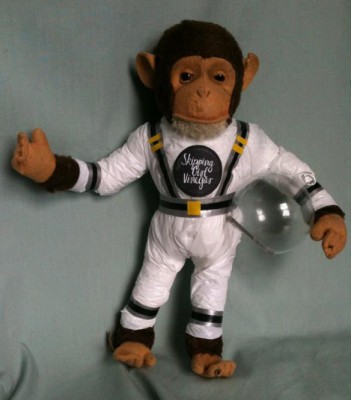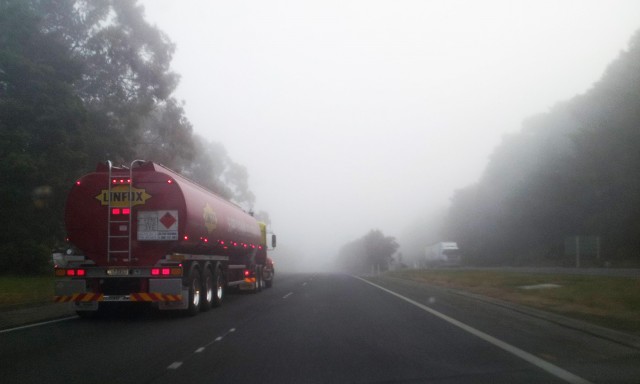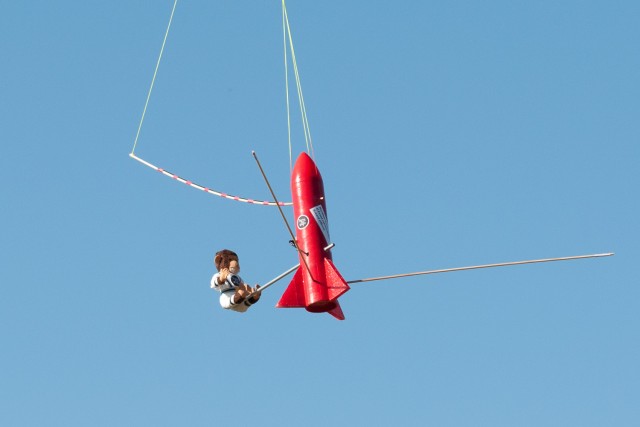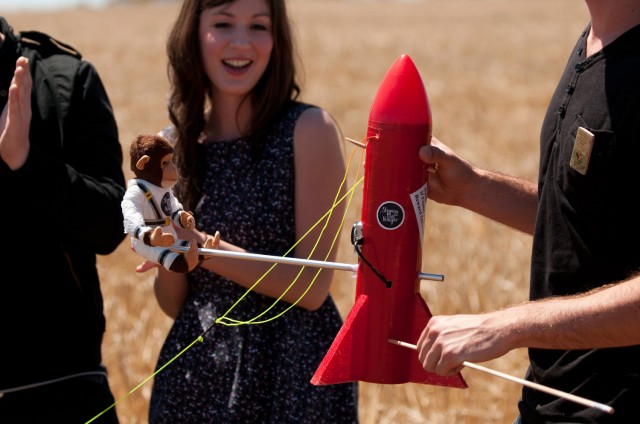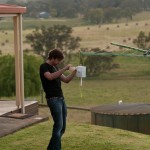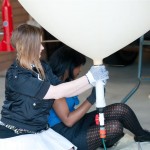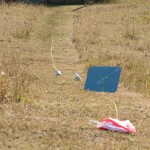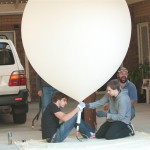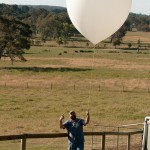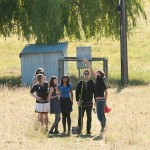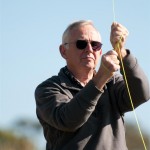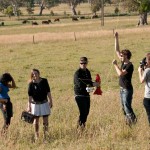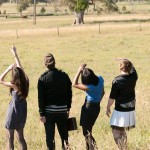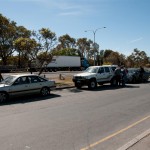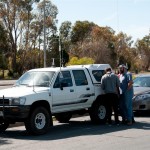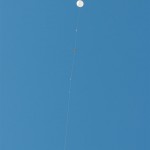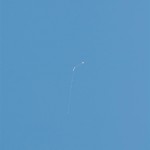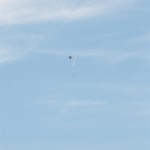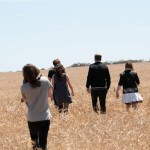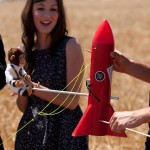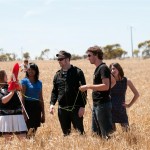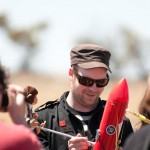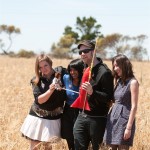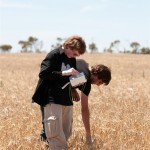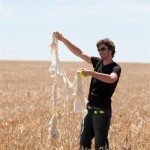Horus 19
Technical information:
| Launch date | 27/11/2011, 08:29 am |
| Landing date | 27/11/2011, 11:13 pm |
| Flight duration | 2 hours, 44 minutes |
| Launch site | -35.1020, 138.8253 |
| Landing site | -35.2689, 139.5047 |
| Flight path | Web,В KMZ |
| Distance travelled | 64.6 km |
| Maximum altitude | 33,588 m |
| Average ascent rate | 4.7 m/s |
| Impact speed | 6.3 m/s |
| Flight computer | MicroNut Flight Computer, MicroNut APRS Tracker |
| GPS module | uBlox 6 NEO-6Q + Sarantel GeoHelix antenna |
| Radio transmitter | Radiometrix NTX2 25mW (RTTY), Radiometrix HX1 300mW (APRS) |
| Telemetry | 300 baud RTTY, CRC16 checksum & APRS |
| Video Cameras | GoPro HD Hero |
| Tracking | Ground stations (distributed listener), 3 chase cars, web based tracker, APRS network |
Details:
We teamed up with Melbourne indie band Skipping Girl Vinegar for Horus 19 - in a joint effort, we sent their hobo monkey 'Baker' to near space as part of a promotional video. Baker was attached to a home-made cardboard, foam & duct tape rocket & filmed in 1080P video courtesy of our trusty GoPro HD Hero.
Baker's spaceship was stabilized byВ lengthyВ but lightweight pine dowels (visible in the photos) - the aim was to increase the payload's rotational mass & reduce spin.
Preparation & Launch:
Baker's DIY rocket required quite a bit of preparation prior to launch - most of this was done on site the night before, leaving only the balloon to be filled on the morning of the launch. Our 2 chase teams as well as the Skipping Girl Vinegar car arrived at the launch site bright and early (around 7am!) and quickly got the balloon inflated, payloads ready & prepared Baker for the ride of his life.
Weather at 7am was decidedly miserable, with heavy fog & overcast cloud skies - fortunately this was fining up by 8am - by the time we were ready to launch we had perfect conditions. The low winds & clear skies made for a painless launch, with Baker & his rocket blasting off according to plan.
Flight & Recovery:
The flight of Horus 19 went exactly as planned, adhering to our flight prediction almost perfectly. The balloon initally headed off towards Murray Bridge, before slowing & turning around to head back towards Adelaide (letting us catch up). Baker soared to just over 33.5km before the balloon burst - the ideal weather meant we had plenty of time to relax and wait for the payload to descend, and both our telemetry payloads performed perfectly.
As Baker descended towards Tailem Bend, it was difficult to pick an access road for recovery - there were 2 possible candidates, so our teams split up. Fortunately Matt's team were in position as Baker touched down, and managed to capture his landing on film as he touched down unharmed in a wheat field.
Conclusions:
Horus 19 was a complete success - all systems worked as expected, some software bugs were resolved & excellent footage was obtained. Despite some minor damage to Baker's ship (a single pine dowel snapped shortly after burst, throwing off the payload balance), the stabilization technique worked very well - I hope to continue to tweak theВ arrangementВ and implement it in future payloads.
The cylindrical payload design used in the rocket also seems to be an ideal configuration for a video payload - the payload is low drag & appears to be stable in relatively high winds.
Horus 19 had a slightly higher descent rate than anticipated - this is no doubt due to the balloon not bursting cleanly. Almost the entire balloon's latex remained entangled in the lines after recovery - adding substantial weight for the parachute to deal with. This occurs occasionally - manufacturers always claim that their balloons burst cleanly (leaving behind only the neck stub), but this is not always the case.
Gallery:
